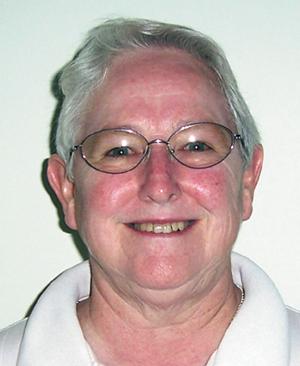
By Mary Wieser
Q: Why do some saints get a feast day? — Nicole Schnack, age 10, St. Joseph School and Parish, DeWitt
Are you going to be a Saint that begins with a capital “S”? Then you will probably have a special feast day. Maybe like the one the Diocese of Peoria, Ill., is hoping to get for Archbishop Fulton Sheen. But most of us will be saints with a little “s.” We will be a saint no matter what if we become the person God wants us to be. So here goes the Catholic Church’s process:
Canonization, the process the Church uses to name a saint, has only been used since the 10th century. For hundreds of years, starting with the first martyrs of the early Church, saints were chosen by public acclaim. Though this was a more democratic way to recognize saints, some saints’ stories were distorted by legend and some never existed. Gradually, the bishops and finally the Vatican took over authority for approving saints.
In 1969, the Church took a long look at all the saints on its calendar to see whether there was historical evidence that a saint existed and lived a life of holiness. The Church discovered little proof that many “saints,” including some very popular ones, ever lived.
Take, for example, St. Christopher. He was listed as a martyr who died under Decius. Nothing else is known about him. One legend tells how he was crossing a river when a child asked to be carried across. When Christopher put the child on his shoulders he found the child to be unbelievably heavy. The child, according to the legend, was Christ carrying the weight of the whole world. This legend made Christopher the patron saint of travelers. His former feast day was July 25. Christopher was one of the names determined to have a basis mostly in legend, and was dropped from the universal calendar.
In 1983, Pope John Paul II made sweeping changes in the canonization procedure. The process now begins after the death of a Catholic whom people regard as holy. Often, the process starts many years later in order to give perspective on the candidate. The local bishop investigates the candidate’s life and writings for heroic virtue (or martyrdom) and orthodoxy of doctrine. Then a panel of theologians at the Vatican evaluates the candidate. After approval by the panel and cardinals of the Congregation for the Causes of Saints, the pope proclaims the candidate “venerable.”
The next step, beatification, requires evidence of one miracle. Since miracles are considered proof that the person is in heaven and can intercede for us, the miracle must take place after the candidate’s death and as a result of a specific petition to the candidate. When the pope proclaims the candidate beatified or “blessed,” the person can be venerated by a particular region or group of people with whom the person holds special importance.
Only after one more miracle will the pope canonize the saint. The title of saint tells us that the person lived a holy life, is in heaven, and is to be honored by the universal Church. Canonization does not “make” a person a saint; it recognizes what God has already done.
Canonization takes a long time and a lot of effort. So while every person who is canonized is a saint, not every holy person has been canonized. You have probably known many “saints” in your life, and you are called by God to be one yourself.
We pray with saints, not to them. Have you ever asked anyone to pray for you when you were having a hard time? Why did you choose to ask that person?
You may have chosen someone you could trust, or someone who understood your problem, or someone who was close to God. Often we ask particular saints to pray for us if we feel they have a particular interest in our problem. Many people ask for St. Monica’s intercession when they have trouble with unanswered prayers. Monica prayed for 20 years for her son’s conversion to Christianity. Finally, her prayers were answered in a way she never dreamed of — her son, Augustine, became a canonized saint and a Doctor of the Church.
Just remember that to be a SAINT in the eyes of God we live our lives in an extraordinary way with love and respect for all. Our feast is celebrated every year on the first of November, All Saints Day!
— Mary Wieser, director of Faith Formation for the Diocese of Davenport
(Students in grades kindergarten through 12 are invited to submit questions about the Catholic Church for The Catholic Messenger’s new Young & Curious feature. Send them to arland-fye@davenportdiocese.org or The Catholic Messenger, 780 W. Central Park Ave., Davenport, Iowa, 52804.)








